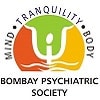drvikasdeshmukh@rediffmail.com

Recently in my Clinic I met Ajay, a 15 year old boy brought for consultation by his parents. They were very concerned regarding his recent changes in behaviour with regards to excess usage of cell phone. Speaking with Ajay, he agreed to his excessive cell phone use saying “I know I am spending a lot of my time on phone but somehow I am not able to control myself. I am so used it now, I constantly feel I will miss out on something when not using my phone. I don’t realise how much time I’m actually spending on Watsapp, Facebook, Instagram or even gaming, time seems to fly by. I am not able focus on my studies. Can you help?”
Cases like Ajay’s are not uncommon. With the increased reach of technology, young adults especially, have taken to social networking sites like never before. The Fear Of Missing Out (FOMO) and many other such factors make the usage of phone/gadgets quite compulsive, especially in this population.
Is screen use or gadget use always bad?
Technology is everywhere, all-pervasive. From paying bills to booking tickets, from entertainment to research, everything is made easy and accessible because of its immense reach. Technology and gadgets have made life simpler, atleast, that is what its true purpose is. Its contribution to that cause is immense and undeniable. So the real question isn’t whether using gadgets is good/bad.
Question is how much is too much? Its not about use itself but about how to use and for what purpose do we use our phones/screen gadgets?
Adolescents may find it more difficult to their control screen/gadget use time.
Various apps, social media sites like Facebook, Instagram, online games invest millions of dollars to make their product more and more attractive (and consequently addictive, though this effect maybe unintended) to accumulate more users. These products are extremely addictive and habit forming. There is area in brain called as Prefrontal Cortex (PFC) which helps control impulsive and addictive behaviour. PFC is fully developed by 25 to 30 years of age. Needless to say, this area is not fully developed in adolescents and young adults. This population therefore is at a higher risk for developing addictive behaviour or habits.
So what are the ill effects of increased screen time?
Physical Effects
Spending more time on screen means spending lesser time outdoors. This leads to decrease in physical activity and increase in chances of adopting a sedentary life style and the ill-effects that come with it. Excess screen time, in some persons is accompanied by increased consumption of unhealthy foods, increasing chances of developing obesity. Other physical problems like eye problems of nearsightedness, body aches and neck pain due to bad posture, etc are not uncommon.
Developmental problems:
- Learning: Watching television/online content is a passive process. The constantly changing images on screen take up all our attention, leaving no room and time for thinking/imagining. Especially for the learning population, they may lose their creative ability. Many other higher functions of the brain like decision making capacity, etc may also be affected.
- Communication: Increased screen time early on in childhood, may lead to decrease in verbal interaction with parents or other peers. This essentially means less practice for these children to talk/communicate verbally/non-verbally. This may ultimately lead to delayed language/speech development.
- Social interaction: Children mainly learn social behaviour and interactions by modelling,i.e., keenly observing others and imitating them. Social interaction consists of not only communicating ones own needs but also picking up and interpreting verbal and non-verbal cues like facial expressions, tone of voice, etc. Excessive time spent on screen limits time spent in actual human interactions thus affecting severely, a child’s social development.
- Emotional development: Understanding our own emotions as well as those of people around us is an important milestone in the achievement of normal social development. Children who end up spending much more time with a non-living screen as opposed to other human beings find themselves unable to connect emotionally, not only with parents but other children also. Moreover, this can affect future relationships of these children too.
- Attention span: Images that are constantly changing on screen are highly attractive to our brains. Someone who is used to these constantly changing stimuli may then get bored too easily. Normal life, school, studies, etc. may start seeming mundane and monotonous. Concentrating on studies for example or anything that requires active and constant involvement and sustained attention, e.g., making project may then seem boring and uninteresting. This may lead to lack of motivation and may result in low efficiency. Children for example will only look forward to watching television/cell phone again rather than studying or completing school work. This can lead to scholastic backwardness and consequently behavioral disturbances.
Though this problem is rampant now, help is available. Professional advise and opinion can be sought on this matter from psychiatrist like Dr. Vikas Deshmukh . If one recognizes signs of screen/gadget addiction in a family member or a near and dear one, do not hesitate or delay taking opinion of a mental health professional.
Contact US
125, First floor, Arenja Arcade, Above Domino’s Pizza, Beside Kshirsagar Hotel, Sector 17, Vashi, Navi Mumbai Maharashtra – 400703.
call 9987 1281 48
Request AppointmentCopyright © All Rights Reserved, By Manovikas Clinic

